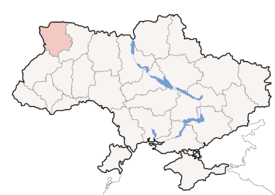M
Miserissima
Guest
I come to display my ignorance. 
My dad maintained that he was “Russian Orthodox,” although I went to a Roman parochial school and was raised Roman Catholic.
Recently, I was given my father’s Birth and Baptism Certificate (they are one in the same). It reads in part, "This is to certify that in the record book of of birth of The Holy Trinity Russian Orthodox Greek Catholic Church, Order No. 46 for 1914. The following is recorded:…"which goes on to a chart listing his birth and baptism dates, his name, name of parents and godparents, and by whom he was baptized – in both English and Russian.
At the bottom is written the city, the state, and “Diocese of North America.” It is also signed by the rector. (I wish my scanner was working so I could link a picture.)
What is the Russian Orthodox Greek Catholic Church? How did it start?
I ‘Googled’ and Wiki says,
I found this website: oca.org/QA.asp?ID=50&SID=3 but in my ignorance, I don’t quite understand a lot of what I was reading.
Is this Church Eastern Orthodox? Byzantine? Why was it both Russian and Greek when my father was Ukrainian (when/where his father and mother were born Ukraine was then Russia)?
I would welcome and online mentorship, if anyone has the time and would be so kind as to PM me. I am more than curious and a willing student. Thank you!
My dad maintained that he was “Russian Orthodox,” although I went to a Roman parochial school and was raised Roman Catholic.
Recently, I was given my father’s Birth and Baptism Certificate (they are one in the same). It reads in part, "This is to certify that in the record book of of birth of The Holy Trinity Russian Orthodox Greek Catholic Church, Order No. 46 for 1914. The following is recorded:…"which goes on to a chart listing his birth and baptism dates, his name, name of parents and godparents, and by whom he was baptized – in both English and Russian.
At the bottom is written the city, the state, and “Diocese of North America.” It is also signed by the rector. (I wish my scanner was working so I could link a picture.)
What is the Russian Orthodox Greek Catholic Church? How did it start?
I ‘Googled’ and Wiki says,
I don’t think that this Church is in communion with Rome. Is this true?The Russian Orthodox Greek Catholic Church in America was granted autocephaly by the Russian Orthodox Church in 1970, and was renamed the Orthodox Church in America. Although the autocephaly of the OCA is not universally recognized by all autocephalous Eastern Orthodox churches, it is in full communion with them. It also is a member of the Standing Conference of Orthodox Bishops in America (SCOBA).
I found this website: oca.org/QA.asp?ID=50&SID=3 but in my ignorance, I don’t quite understand a lot of what I was reading.
Is this Church Eastern Orthodox? Byzantine? Why was it both Russian and Greek when my father was Ukrainian (when/where his father and mother were born Ukraine was then Russia)?
I would welcome and online mentorship, if anyone has the time and would be so kind as to PM me. I am more than curious and a willing student. Thank you!


